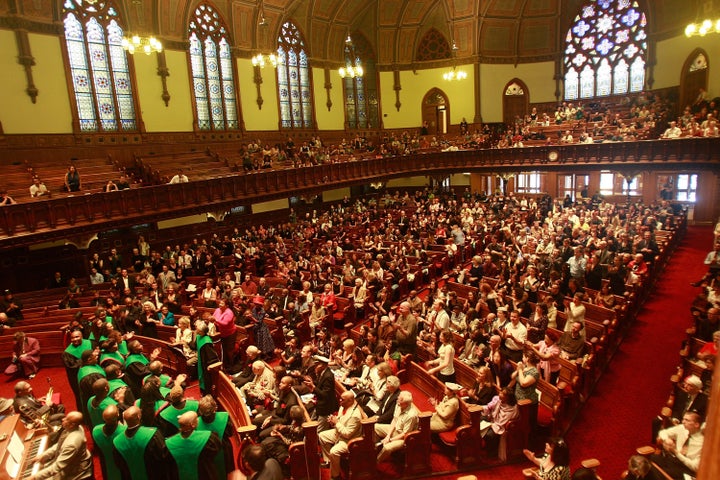
Martin Luther King's once said 11 a.m. Sunday morning is the most segregated hour in America. That statement seems to remain true today, 57 years later. However, the 2010 Faith Communities Today** report shows a major shift toward desegregation is underway among the nation's religious communities.
The study, which included more than 11,000 congregations, found the number of multiracial faith communities has nearly doubled in the past decade. Nearly 14 percent of congregations are considered multiracial, with at least 20 percent of members coming from racial groups different from the congregation's majority race. The study also found 4 percent of America's congregations are multiracial, with no racial group having a majority.
Researchers have been tracking these changes since the 1990s. Mark Chaves, in the 1998 National Congregations Study, reported that 7.5 percent of all congregations were multiracial. Another study in the late 1990s by sociologist Michael Emerson found 5 percent of Protestant churches and 15 percent of Catholic churches were multiracial.
When compared to this earlier research, our 2010 Faith Communities Today study (www.faithcommunitiestoday.org), coordinated by David Roozen at Hartford Institute for Religion Research (www.hartfordinstitute.org), Hartford Seminary in Connecticut, found the percentage of multiracial congregations (using the 20 percent or more minority criteria) had nearly doubled in the past decade to 13.7 percent.
The percent of multiracial congregations are increasing in nearly all faith groups. In 2010, 12.5 percent of all Protestant Christian churches and 27.1 percent of other Christian churches (Catholic/Orthodox) were multiracial. Multiracial Mainline Protestant churches accounted for 7.4 percent of their total, while 14.4 percent of Evangelical Protestant congregations were multiracial.
Additionally, non-Christian congregations have considerable racial diversity. The 2010 survey found that 35.4 percent of congregations in faith traditions such as Baha'i, Muslim, Sikh and others were multiracial.
Not too surprising, multiracial congregations are most likely found to be located in the western region, in larger urban areas and where the zip code they reside in is highly racially diverse. These congregations are also more likely to hold services both in English and other languages.
Interestingly, intentionality is also important. The survey asked participants whether the congregation wanted to be racially and culturally diverse. The stronger they agreed the more multiracial they were.
As the country continues to diversify at a dramatic rate, thanks to our immigration policies, it is pleasing to see America's congregations opening their doors to that diversity as well. If heaven is going to include all races, it's encouraging to see our faith communities beginning to reflect that reality in the present.
**The 2010 Faith Communities Today Survey is based on a random sample, key informant mailed/emailed survey of 11,077 congregations in over 120 denominations. Further information about the survey and its methods can be found at http://faithcommunitiestoday.org/fact-2010